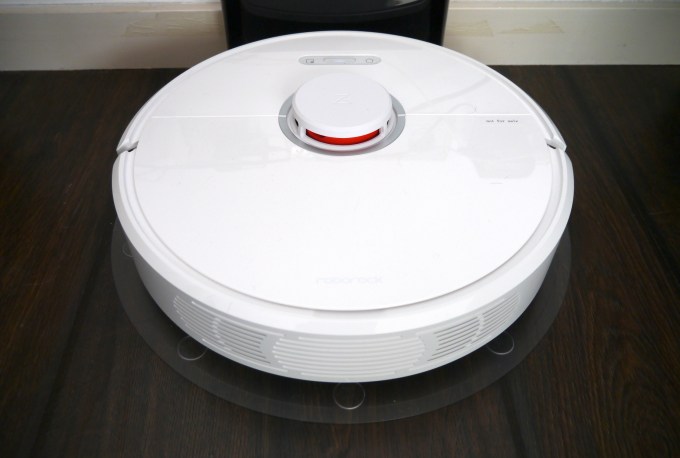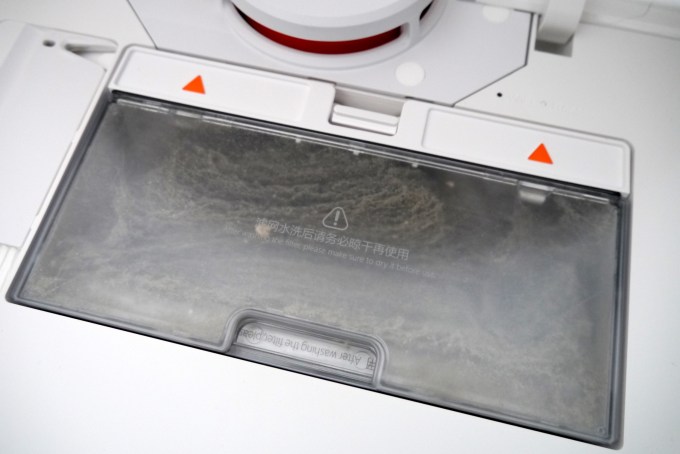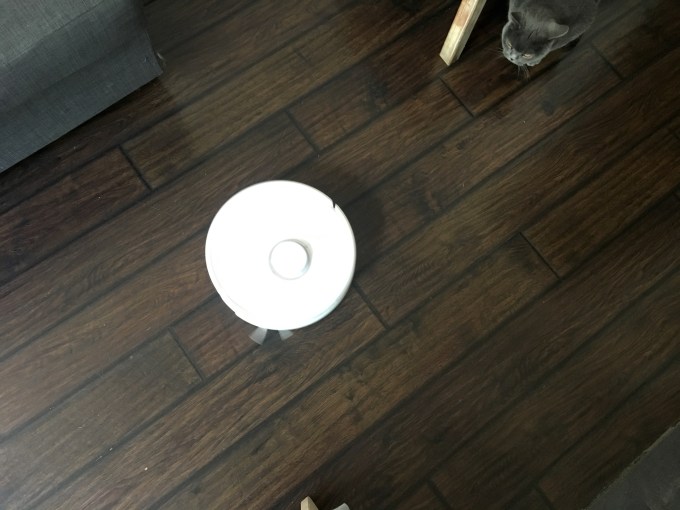
What Early PC Had An Unofficial “Sound Card” Driven By Excessive Radio Interference? |
|
Think you know the answer? |
|
from How-To Geek http://bit.ly/2PZM20T

What Early PC Had An Unofficial “Sound Card” Driven By Excessive Radio Interference? |
|
Think you know the answer? |
|

![]() Elizabeth Ballou / Vice:
Elizabeth Ballou / Vice:
An in-depth look at Ingress, a sci-fi AR/VR MMO game about two factions fighting for global domination, and how far its fans go in real life for a virtual war — She led hundreds of real people on secret missions for a make-believe cause. — At 4:30 PM on February 17th, 2017 …

![]() Spencer Soper / Bloomberg:
Spencer Soper / Bloomberg:
Amazon's recent pledge of $800M to make next-day delivery the new standard is pressuring rivals to increase their investments in logistics startups to compete — - Flexe and Dolly are lining up backing for national expansions — Several of the upstarts are led by former Amazon executives

![]() Andreessen Horowitz:
Andreessen Horowitz:
Enterprise startups should not rely on data network effects as a defensive moat and should focus on and invest in long-term defensibility from other areas — Data has long been lauded as a competitive moat for companies, and that narrative's been further hyped with the recent wave of AI startups.

![]() Meir Orbach / CTech - 24/7:
Meir Orbach / CTech - 24/7:
Salesforce to acquire Tel Aviv-based conversational AI startup Bonobo, source says for $50M — Software company Salesforce.com Inc. is acquiring Tel Aviv-based conversational AI startup Bonobo, incorporated as Bonobot Technologies Ltd., the company announced Thursday.

![]() Khari Johnson / VentureBeat:
Khari Johnson / VentureBeat:
Google awards $25M in AI impact grants to organisations from 12 countries which want to use AI to reduce pesticide use, study suicide risk in LGBT youth, more — Google today awarded $25 million in grants to a range of organizations to help them apply machine learning to fight some of the world's biggest challenges.
Not everyone gets a second chance in Silicon Valley. Entrepreneur Hosain Rahman has been given many more than that. Though his last company, Jawbone, which produced wireless speakers and Bluetooth earpieces, went kaput in 2017 after burning up $1 billion in venture funding over the course of ten years, Rahman has managed to raise $65.4 million for his new company. So shows a new SEC filing that, coincidentally or otherwise, was processed late yesterday while most of the world’s attention was focused on Uber’s IPO.
The company, Jawbone Health, isn’t brand new. According to reports of two years ago and Rahman’s LinkedIn bio, he began working in earnest on his newest endeavor when the original Jawbone was running on fumes in the summer of 2017.
In fact, according to LinkedIn, Jawbone Health now employs 51 people, including people who worked with Rahman previously. Among these is the new outfit’s VP of engineering, Jonathan Hummel, who’d been a senior engineering manager at Jawbone during the last two years of its life. Others are new to the organization because of its focus on healthcare. These include Yaniv Kerem, Jawbone Health’s VP of Informatics, whose last job was as an emergency medical physician with Kaiser Permanente.
Certainly, the company has a very different mission than even the wearable fitness trackers that Jawbone was making toward the company’s end in a kind of Hail Mary pass whose failure signaled to some the very end of the wearables industry — though it was really just the end of Jawbone’s attempts at becoming a sustainable enterprise.
Whether Rahman can do better with Jawbone Health will be interesting to see. As he told reporter Kara Swisher last fall, what Jawbone Health is selling is a “personalized subscription service where we take all of this continuous health data about you and we combine that with a lot of machine intelligence . . .”
The idea is to prevent the preventable diseases that wind up killing two-thirds of us owing to bad-decision making and plain-old inattention. “If you catch that stuff early and you change your behavior or whatnot, you can push out half of those deaths and save 70 percent of the cost,” he told her.
Jawbone Health is making its own devices, Rahman added. They will come free with the service.
One obvious concern for the new company is competition. Where Jawbone made attractive, wireless speakers ahead of many other companies whose products now litter our homes, Rahman is seemingly late to the party with Jawbone Health. There are already rings that track sleep activity and heart rate; bracelets that come with built-in accelerometers, heart rate sensors, and temperature sensors; and even textiles that unlock biometric insights. That’s saying nothing of the Apple Watch, which has already put plenty of startups out of business.
Rahman says one of Jawbone Health’s biggest differentiators is that the product and service are “clinical grade.” That’s not necessarily enough of a selling point for many consumers. After all, humans don’t have the best track record when it comes to taking care of themselves. Still, he now has $65 million to prove out his theory.
The new funding, atop of so much lost already, is sure to frustrate some founders who’ve been given fewer opportunities. It may also confuse others who’ve either worked with or funded Rahman in the past.
Then again, Rahman wouldn’t be the first founder to bounce back from failure, and he has plenty to prove. That may work in the favor of his new backers, including SignalFire and Refactor Capital in the Bay Area, and Polymath Ventures and Meraas in the United Arab Emirates.
We’ll have more on the company soon.
Happy Blockchain Week to you and yours. HTC helped kick off this important national holiday by announcing the upcoming release of the HTC Exodus 1s. The latest version of the company’s intriguing blockchain phone shaves some of price off the Exodus 1 — which eventually sold for $699 when the company made it available in more traditional currency.
HTC’s being predictably cagey about exact pricing here, instead simply calling it “a more value-oriented version” of the original. Nor is the company discussing the actions it’s taking to reduce the cost here — though I’d expect much of them to be similar to those undergone by Google for the Pixel 3a, which was built by the former HTC team. There, most of the hits were to processing power and building material. Certainly the delightfully gimmicky transparent rear was a nice touch on the Exodus 1.
Most interesting here is the motivation behind the price drop. Here’s HTC in the press release:
It will allow users in emerging economies, or those wanting to dip their toes into the crypto world for the first time, easier access to the technology with a more accessible price point. This will democratize access to crypto and blockchain technology and help its global proliferation and adoption. HTC will release further details on exact specification and cost over the coming months.
A grandiose vision, obviously, but I think there’s something to be said for the idea. Access to some blockchain technology is somewhat price-prohibitive. Even so. Many experts in the space agree that blockchain will be an important foundation for microtransactions going forward. The Exodus 1 wasn’t exactly a smash from the look of things, but this could be an interesting first step.
Another interesting bit in all of this is the opening of the SDK for Zion Vault, the Trusted Execution Environment (TEE) product vault the company introduced with the Exodus 1. HTC will be tossing it up on GitHub for developers. “We understand it takes a community to ensure strength and security,” the company says, “so it’s important to the Exodus team that our community has the best tools available to them.”
TechCrunch editor-in-chief Matthew Panzarino traveled to Florida this week to talk with Tim Cook about Apple’s developer education initiatives and also meet with high school developer Liam Rosenfeld of Lyman High School. Apple wants to attract the next set of app developers like Liam into the Xcode world, and the company is building a more ambitious strategy to do so going forward:
But that conversation with Liam does bring up some questions, and I ask Cook whether the thinks that there are more viable pathways to coding, especially for people with non-standard education or backgrounds.
“I don’t think a four year degree is necessary to be proficient at coding,” says Cook. “I think that’s an old, traditional view. What we found out is that if we can get coding in in the early grades and have a progression of difficulty over the tenure of somebody’s high school years, by the time you graduate kids like Liam, as an example of this, they’re already writing apps that could be put on the App Store.”
TechCrunch columnist Jon Evans often writes on developer tools and productivity (see, for example, his Extra Crunch overview of the headless CMS space). Now, he sets his sights on Slack, and finds the product … much better and more productive than many would have you believe, and offers tips for maximizing its value:
If you’ve flirted with the idea of buying a robot vacuum you may also have stepped back from the brink in unfolding horror at the alphabetic soup of branded discs popping into view. Consumer choice sounds like a great idea until you’ve tried to get a handle on the handle-less vacuum space.
Amazon offers an A to Z linklist of “top brands” that’s only a handful of letters short of a full alphabetic set. The horror.
What awaits the unseasoned robot vacuum buyer as they resign themselves to hours of online research to try to inform — or, well, form — a purchase decision is a seeming endless permutation of robot vac reviews and round-ups.
Unfortunately there are just so many brands in play that all these reviews tend to act as fuel, feeding a growing black hole of indecision that sucks away at your precious spare time, demanding you spend more and more of it reading about robots that suck (when you could, let’s be frank, be getting on with the vacuuming task yourself) — only to come up for air each time even less convinced that buying a robot dirtbag is at all a good idea.
Reader, I know, because I fell into this hole. And it was hellish. So in the spirit of trying to prevent anyone else falling prey to convenience-based indecision I am — apologies in advance — adding to the pile of existing literature about robot vacuums with a short comparative account that (hopefully) helps cut through some of the chaff to the dirt-pulling chase.
Here’s the bottom line: Budget robot vacuums that lack navigational smarts are simply not worth your money, or indeed your time.
Yes, that’s despite the fact they are still actually expensive vacuum cleaners.
Basically these models entail overpaying for a vacuum cleaner that’s so poor you’ll still have to do most of the job yourself (i.e. with a non-robotic vacuum cleaner).
It’s the very worst kind of badly applied robotics.
Abandon hope of getting anything worth your money at the bottom end of the heap. I know this because, alas, I tried — opting, finally and foolishly (but, in my defence, at a point of near desperation after sifting so much virtual chaff the whole enterprise seemed to have gained lottery odds of success and I frankly just wanted my spare time back), for a model sold by a well-known local retailer.
It was a budget option but I assumed — or, well, hoped — the retailer had done its homework and picked a better-than-average choice. Or at least something that, y’know, could suck dust.
The brand in question (Rowenta) sat alongside the better known (and a bit more expensive) iRobot on the shop shelf. Surely that must count for something? I imagined wildly. Reader, that logic is a trap.
I can’t comment on the comparative performance of iRobot’s bots, which I have not personally tested, but I do not hesitate to compare a €180 (~$200) Rowenta-branded robot vacuum to a very expensive cat toy.
This robot vacuum was spectacularly successful at entertaining the cat — presumably on account of its dumb disposition, bouncing stupidly off of furniture owing to a total lack of navigational smarts. (Headbutting is a pretty big clue to how stupid a robot it is, as it’s never a stand-in for intelligence even when encountered in human form.)
Even more tantalizingly, from the cat’s point of view, the bot featured two white and whisker-like side brushes that protrude and spin at paw-tempting distance. In short: Pure robotic catnip.
The cat did not stop attacking the bot’s whiskers the whole time it was in operation. That certainly added to the obstacles getting in its way. But the more existential problem was it wasn’t sucking very much at all.
At the end of its first concluded ‘clean’, after it somehow managed to lurch its way back to first bump and finally hump its charging hub, I extracted the bin and had to laugh at the modest sized furball within. I’ve found larger clumps of dust gathering themselves in corners. So: Full marks for cat-based entertainment but as a vacuum cleaner it was horrible.
At this point I did what every sensible customer does when confronted with an abject lemon: Returned it for a full refund. And that, reader, might have been that for me and the cat and robot vacs. Who can be bothered to waste so much money and time for what appeared laughably incremental convenience? Even with a steady supply of cat fur to contend with.
But as luck would have it a Roborock representative emailed to ask if I would like to review their latest top-of-the-range model — which, at €549, does clock in at the opposite end of the price scale; ~3x the pitiful Rowenta. So of course I jumped at the chance to give the category a second spin — to see if a smarter device could impress me and not just tickle the cat’s fancy.
Clearly the price difference here, at the top vs the bottom of the range, is substantial. And yet, if you bought a car that was 3x times cheaper than a Ferrari you’d still expect not just that the wheels stay on but that it can actually get you somewhere, in good time and do so without making you horribly car sick.
Turns out buyers of robot vacuums need to tread far more carefully.
Here comes the bookending top-line conclusion: Robot vacuums are amazing. A modern convenience marvel. But — and it’s a big one — only if you’re willing to shell out serious cash to get a device that actually does the job intended.

Roborock S6: It’s a beast at gobbling your furry friend’s dander
Comparing the Roborock S6 and the Rowenta Smart Force Essential Aqua RR6971WH (to give it its full and equally terrible name) is like comparing a high-end electric car with a wind-up kid’s toy.
Where the latter product was so penny-pinching the company hadn’t even paid to include in the box a user manual that contained actual words — opting, we must assume, to save on translation costs by producing a comic packed with inscrutable graphics and bizarro don’t do diagrams which only served to cement the fast-cooling buyer’s conviction they’d been sold a total lemon — the Roborock’s box contains a well written paper manual that contains words and clearly labeled diagrams. What a luxury!
At the same time there’s not really that much you need to grok to get your head around operating the Roborock. After a first pass to familiarize yourself with its various functions it’s delightfully easy to use. It will even produce periodic vocal updates — such as telling you it’s done cleaning and is going back to base. (Presumably in case you start to worry it’s gone astray under the bed. Or that quiet industry is a front for brewing robotic rebellion against indentured human servitude.)
One button starts a full clean — and this does mean full thanks to on-board laser navigation that allows the bot to map the rooms in real-time. This means you get methodical passes, minimal headbutting and only occasional spots missed. (Another button will do a spot clean if the S6 does miss something or there’s a fresh spill that needs tidying — you just lift the bot to where you want it and hit the appropriate spot.)
There is an app too, if you want to access extra features like being able to tell it to go clean a specific room, schedule cleans or set no-go zones. But, equally delightfully, there’s no absolute need to hook the bot to your wi-fi just to get it to do its primary job. All core features work without the faff of having to connect it to the Internet — nor indeed the worry of who might get access to your room-mapping data. From a privacy point of view this wi-fi-less app-free operation is a major plus.
In a small apartment with hard flooring the only necessary prep is a quick check to clear stuff like charging cables and stray socks off the floor. You can of course park dining chairs on the table to offer the bot a cleaner sweep. Though I found the navigation pretty adept at circling chair legs. Sadly the unit is a little too tall to make it under the sofa.
The S6 includes an integrated mopping function, which works incredibly well on lino-style hard flooring (but won’t be any use if you only have carpets). To mop you fill the water tank attachment; velcro-fix a dampened mop cloth to the bottom; and slide-clip the whole unit under the bot’s rear. Then you hit the go button and it’ll vacuum and mop in the same pass.
In my small apartment the S6 had no trouble doing a full floor clean in under an hour, without needing to return to base to recharge in the middle. (Roborock says the S6 will drive for up to three hours on a single charge.)
It also did not seem to get confused by relatively dark flooring in my apartment — which some reviews had suggested can cause headaches for robot vacuums by confusing their cliff sensors.
After that first clean I popped the lid to check on the contents of the S6’s transparent lint bin — finding an impressive quantity of dusty fuzz neatly wadded therein. This was really just robot vacuum porn, though; the gleaming floors spoke for themselves on the quality of the clean.

The level of dust gobbled by the S6 vs the Rowenta underlines the quality difference between the bottom and top end of the robot vacuum category.
So where the latter’s plastic carapace immediately became a magnet for all the room dust it had kicked up but spectacularly failed to suck, the S6’s gleaming white shell has stayed remarkably lint-free, acquiring only a minimal smattering of cat hairs over several days of operation — while the floors it’s worked have been left visibly dust- and fur-free. (At least until the cat got to work dirtying them again.)
Higher suction power, better brushes and a higher quality integrated filter appear to make all the difference. The S6 also does a much better cleaning job a lot more quietly. Roborock claims it’s 50% quieter than the prior model (the S5) and touts it as its quietest robot vacuum yet.
It’s not super silent but is quiet enough when cleaning hard floors not to cause a major disturbance if you’re working or watching something in the same room. Though the novelty can certainly be distracting.
Even the look of the S6 exudes robotic smarts — with its raised laser-housing bump resembling a glowing orange cylonic eye-slot.
Although I was surprised, at first glance, by the single, rather feeble looking side brush vs the firm pair the Rowenta had fixed to its undercarriage. But again the S6’s tool is smartly applied — stepping up and down speed depending on what the bot’s tackling. I found it could miss the odd bit of lint or debris such as cat litter but when it did these specs stood out as the exception on an otherwise clean floor.
It’s also true that the cat did stick its paw in again to try attacking the S6’s single spinning brush. But these attacks were fewer and a lot less fervent than vs the Rowenta, as if the bot’s more deliberate navigation commanded greater respect and/or a more considered ambush. So it appears that even to a feline eye the premium S6 looks a lot less like a dumb toy.

Cat plots another ambush while the S6 works the floor
On a practical front, the S6’s lint bin has a capacity of 480ml. Roborock suggests cleaning it out weekly (assuming you’re using the bot every week), as well as washing the integrated dust filter (it supplies a spare in the box so you can switch one out to clean it and have enough time for it to fully dry before rotating it back into use).
If you use the mopping function the supplied reusable mop cloths do need washing afterwards too (Roborock also includes a few disposable alternatives in the box but that seems a pretty wasteful option when it’s easy enough to stick a reusable cloth in with a load of laundry or give it a quick wash yourself). So if you’re chasing a fully automated, robot-powered, end-to-cleaning-chores dream be warned there’s still a little human elbow grease required to keep everything running smoothly.
Still, there’s no doubt a top-of-the-range robot vacuum like the S6 will save you time cleaning.
If you can justify the not inconsiderable cost involved in buying this extra time by shelling out for a premium robot vacuum that’s smart enough to clean effectively all that’s left to figure out is how to spend your time windfall wisely — resisting the temptation to just put your feet up and watch the clever little robot at work.

![]() Laura Hautala / CNET:
Laura Hautala / CNET:
A look at the eclectic, global data-hunting community, and the tools its members use to scour the internet for unsecured databases — Justin Paine sits in a pub in Oakland, California, searching the internet for your most sensitive data. It doesn't take him long to find a promising lead.

![]() Charlie Osborne / ZDNet:
Charlie Osborne / ZDNet:
French telecom Orange to acquire Netherlands-based cybersecurity company SecureLink for €515M — The deal has been inked for over €500 million. — Orange has agreed to acquire SecureLink to tap into the growing enterprise cybersecurity market in Europe.

![]() Dan Primack / Axios:
Dan Primack / Axios:
Uber's IPO got caught in a perfect storm of negative events on Friday, some of its own making, some, like Trump's China tariffs, outside its control — Uber's IPO stalled out yesterday, stunning both Silicon Valley and Wall Street. — Details: The ride-hail giant priced shares near the bottom of their range on Thursday night.

![]() Catalin Cimpanu / ZDNet:
Catalin Cimpanu / ZDNet:
Dutch Ministry of Justice and Security preemptively arrested some of its most high-risk suspects after a software update crashed hundreds of ankle monitors — Borked update prevents ankle monitors from sending data back to police control rooms. — A borked software update has crashed hundreds …
With the look of someone betrayed, Facebook’s CEO has fired back at co-founder Chris Hughes and his brutal NYT op-ed calling for regulators to split up Facebook, Instagram, and WhatsApp. “When I read what he wrote, my main reaction was that what he’s proposing that we do isn’t going to do anything to help solve those issues. So I think that if what you care about is democracy and elections, then you want a company like us to be able to invest billions of dollars per year like we are in building up really advanced tools to fight election interference” Zuckerberg told France Info while in Paris to meet with French President Emmanuel Macron.
Zuckerberg’s argument boils down to the idea that Facebook’s specific problems with privacy, safety, misinformation, and speech won’t be directly addressed by breaking up the company, and instead would actually hinder its efforts to safeguard its social networks. The Facebook family of apps would theoretically have fewer economies of scale when investing in safety technology like artificial intelligence to spot bots spreading voter suppression content.

Facebook’s co-founders (from left): Dustin Moskovitz, Chris Hughes, and Mark Zuckerberg
Hughes claims that “Mark’s power is unprecedented and un-American” and that Facebook’s rampant acquisitions and copying have made it so dominant that it deters competition. The call echoes other early execs like Facebook’s first president Sean Parker and growth chief Chamath Palihapitiya who’ve raised alarms about how the social network they built impacts society.
But Zuckerberg argues that Facebook’s size benefits the public. “Our budget for safety this year is bigger than the whole revenue of our company was when we went public earlier this decade. A lot of that is because we’ve been able to build a successful business that can now support that. You know, we invest more in safety than anyone in social media” Zuckerberg told journalist Laurent Delahousse.
The Facebook CEO’s comments were largely missed by the media, in part because the TV interview was heavily dubbed into French with no transcript. But written out, his quotes offer a window into how deeply Zuckerberg dismisses Hughes’ claims. “Well [Hughes] was talking about a very specific idea of breaking up the company to solve some of the social issues that we face” Zuckerberg says before trying to decouple solutions from anti-trust regulation. “The way that I look at this is, there are real issues. There are real issue around harmful content and finding the right balance between expression and safety, for preventing election interference, on privacy.”
Claiming that a breakup “isn’t going to do anything to help” is a more unequivocal refutation of Hughes’ claim than that of Facebook VP of communications and former UK deputy Prime Minster Nick Clegg. He wrote in his own NYT op-ed today that “what matters is not size but rather the rights and interests of consumers, and our accountability to the governments and legislators who oversee commerce and communications . . . Big in itself isn’t bad. Success should not be penalized.”

Mark Zuckerberg and Chris Hughes
Something certainly must be done to protect consumers. Perhaps that’s a break up of Facebook. At the least, banning it from acquiring more social networks of sufficient scale so it couldn’t snatch another Instagram from its crib would be an expedient and attainable remedy.
But the sharpest point of Hughes’ op-ed was how he identified that users are trapped on Facebook. “Competition alone wouldn’t necessarily spur privacy protection — regulation is required to ensure accountability — but Facebook’s lock on the market guarantees that users can’t protest by moving to alternative platforms” he writes. After Cambridge Analytica “people did not leave the company’s platforms en masse. After all, where would they go?”
That’s why given critics’ call for competition and Zuckerberg’s own support for interoperability, a core tenet of regulation must be making it easier for users to switch from Facebook to another social network. As I’ll explore in an upcoming piece, until users can easily bring their friend connections or ‘social graph’ somewhere else, there’s little to compel Facebook to treat them better.